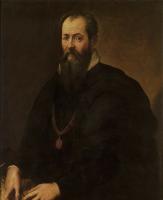Carl Gustav Jung's Red Book
For more than 80 years, the texts that shape the Red Book remained under the protection and care of the heirs of Carl Gustav Jung until its publication in 2009.
For some it is the most influential unpublished work in the history of psychology, the New York Times after its publication, he called it "the holy grail of the unconscious", and today we can speak of it as the work that marked all the subsequent work of Carl Gustav Jung and that gave birth to his analytical psychology: The red book.
- You can purchase Carl Gustav Jung's Red Book through this link.
Carl Gustav Jung's meeting with Sigmund Freud
In the year 1913 there was a turning point in the life of Carl Gustav Jung (among other things, especially marked by the intellectual separation with Sigmund Freud). Until today, what happened to him has always been a source of discussion and controversy among Jungian analysts and other psychoanalysts. This episode has been variously called: a creative illness, a fit of madness, a narcissistic self-deification, a mental disturbance close to psychosis, a process of reunion with the soul etc
The point is that, during this period, Jung carried out an experiment on himself that lasted until 1930 and that he later recognized as his "confrontation with the unconscious.". The "confrontation" was narrated and portrayed in his work "The Red Book", which remained unpublished for more than eighty years, was described by Jung as the work that gave rise to the development of a "Technique to get to the bottom of internal processes [...] translate emotions into images [...] and understand fantasies that mobilized him underground" and that he later called imagination active.
Jung began the book by recording his fantasies in the so-called "black books" that he later reviewed, complementing them with various reflections. Finally, he calligraphically transferred these texts along with illustrations to a book in red called Liber Novus.
Almost a century of mystery
For most of his friends, colleagues and even his own relatives, the Red Book was always surrounded by mystery, as Jung was always jealous of his work. He only shared his intimate experiences written in the book with his wife Emma Rauschenbach and a few other people he trusted. In addition, he left his work with the book unfinished in the year 1930, trying to resume it again in 1959, despite which the epilogue remained unfinished.
Although Jung evaluated his publication, the most he showed of it while working on it was Seven Sermons to the Dead, printed and given by the author himself to a few acquaintances in the year 1916. The reason why he did not decide to publish Liber Novus was simple: the work was still unfinished.
Although Jung maintained that the book is an autobiographical work, he was reluctant to publish it in his collected works, considering that it was not scientific in nature. After his death in 1961, the legacy of the book passed into the hands of his descendants, who, knowing that it was a unique and irreplaceable work, they decided to keep it in the safe of a bank in 1983. After extensive discussion between the contributors to his collected works and Jung's group of heirs, in the year 2000 that its publication was authorized.
Finally, the book saw the light in 2009. Among the reasons that convinced the heirs to publish said work, is the fact that it was the stuff that shaped all of his later work and the development of psychology analytics.
The “holy grail of the unconscious”
All of Jung's later work stems from the ideas presented in this book. jung depicts in an almost prophetic and medieval way the study of the unconscious that he himself tackled symbolically during those years. It is because of the abstract nature of the topics covered in this work that the book has a very marked structure.
Parts of The Red Book
In its published version, the work is divided into three parts: Liber Primus, Liber Secundus and the scrutinies.
In the first, the unconscious symbolic experiences lived by Jung from November 12 to December 25, 1913, where the figure of the hero understood by Jung as his superior psychic function takes place, which has to be killed by him in order for it to resurface its counterpart and start the individuation process, but not before meeting other archetypes such as the soul, the wise old man, the sun god, etc
In the liber secundus (drafted from December 26, 1913 to April 1914) the successive encounters with other symbolic images that are usually characters with whom Jung interacts are narrated promoting the awareness of processes and functions dissociated from Jung's personality, and with this opening the possibility of achieving the transcendent function.
Finally, Scrutinies (which was not originally written in the red-cover notebook) and which he wrote between 1914 and 1916 It has a less "poetic" and much more complex content than the previous books., since it provides keys and notes from Jung himself for the understanding of his experiences in the previous books.
The consecration of his theories as a result of the book
Jung wanted to develop a psychological model based on the visions narrated in the book, which became a great odyssey because it was difficult for the scientific community to accept. Although Jung's personality was always shaped by the pseudoscience such as alchemy, astrology, the I ching, etc. Jung always strove to create a unifying theory between the role of the mind and physical phenomena.
The red book is testimony to these efforts, as well as essential study material for anyone interested in analytical psychology..


